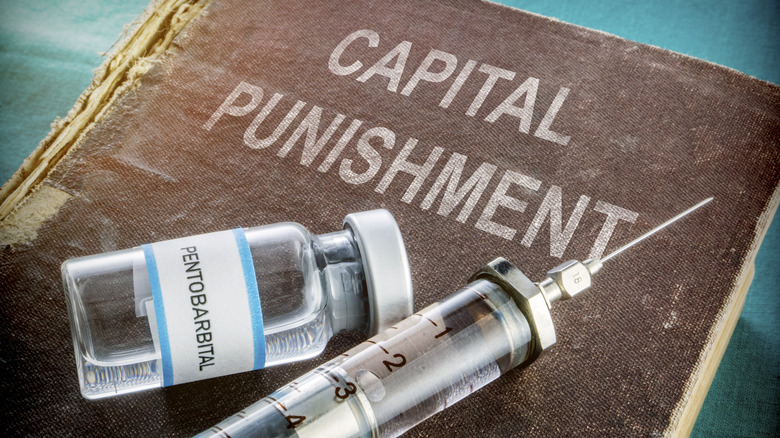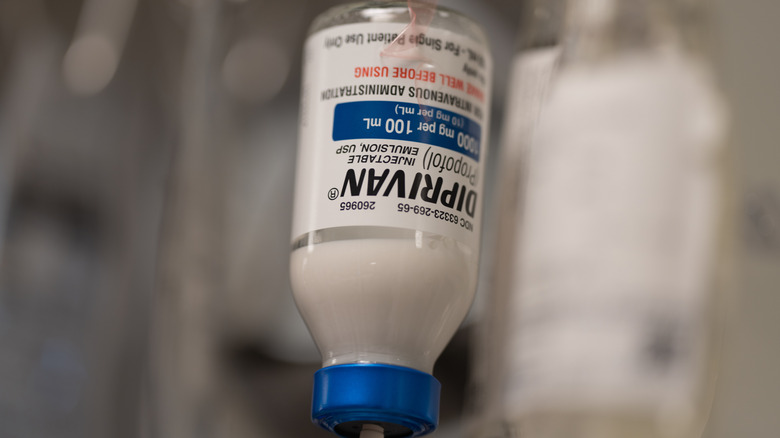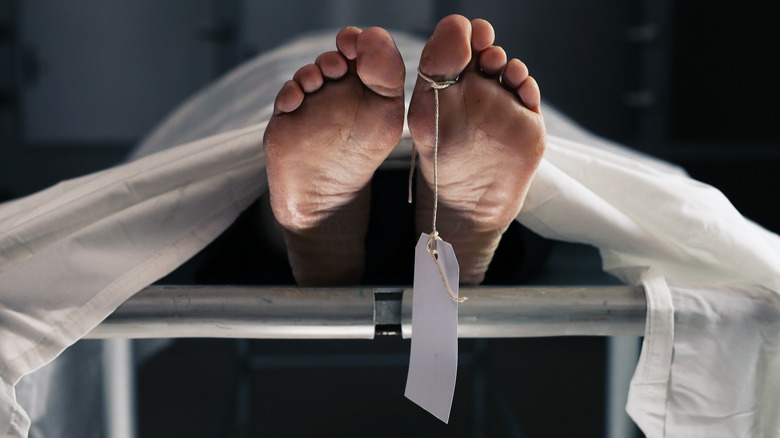What Actually Happens To Your Body During Lethal Injection
The western world has a storied history regarding capital punishment. Executions, as with any other procedure, have greatly evolved over time. While most of the condemned in the United States met their maker at the end of a rope, at one point in colonial history, people were pressed to death under heavy stones. In the last 400 years, the various systems of justice have also used death by burning, firing squad, poisonous gas, and a few other less common methods too barbaric to mention (via Time).
Since 1993, the most common method of execution in the United States has been lethal injection (via CNN). Being touted as the most humane way to carry out the death penalty, it has been the top choice for those on death row who are given the option to select their mode of death. It's worth pointing out, however, that there are some groups who maintain that this method is inhumane, and can cause unnecessary suffering.
According to the Chicago Tribune, there have been nearly three dozen documented problems with this form of capital punishment since 1985. These issues range from prolonged death, to needles shooting out of a condemned man's veins, to violent reactions to the drugs that were administered intravenously. This has led to activist groups calling for this execution method to be banned outright.
How does lethal injection work? What does your body experience during the process? You might envision lethal injection as a one-and-done shot that kills the inmate. With all the different poisons known to humans, this would certainly be possible.
Sodium pentothal, followed by pancurium bromide
Injecting someone with strychnine would be a pretty painful way to euthanize a person, and would certainly be considered a cruel form of punishment. So rather than just insert a single lethal agent into the subject, the law opts for a series of three separate injections. This is to minimize anxiety and pain, as well as making the process as quick as possible.
The first drug that is administered is an anesthetic. Many options exist for this, but the most commonly used one is sodium pentothal (via Britannica). According to Scienceline, this first injection does not numb the person from any pain. Rather, it works quickly to put them into a deep sleep, usually within 30 seconds of the chemical entering the bloodstream. So, if this drug only puts the person to sleep, what keeps them from waking up from the painful drug that will be introduced later?
The body now needs to undergo total muscular paralysis, in order to avoid the pain from cardiac arrest that will be the result of death. In order to achieve this, a second chemical is released into the intravenous line. This chemical, pancurium bromide, acts like a paralytic. Via Science Line, pancurium bromide "acts as a neuromuscular blocker, preventing a nerve messenger, acetylcholine, from communicating with muscles. The result is a complete muscle paralysis, which causes respiratory arrest since the diaphragm — a muscle imperative to pulling air into the lungs — stops working."
Potassium chloride
Now we know why it's so important that the first injection not only be delivered properly, but that it also is strong enough to keep the condemned unconscious throughout the duration of the execution process. With the body entirely paralyzed, death by respiratory failure would happen within minutes. This would be an agonizing way to go as well, which is why there is a third chemical waiting in the wings.
Now that the condemned is in a deep sleep and totally paralyzed, it's time to stop their heart. To accomplish this as humanely as possible, the pic line is filled with potassium chloride. This chemical sends charged particles into the heart. This disrupts the heart's electrical system, and almost immediately sends the person into severe cardiac arrest (via Scienceline).
For those who witness the procedure, they describe the body having a slow respiration, followed by a sudden stillness. Of course, this is if the procedure is carried out to perfection. As earlier noted in this article, there have been multiple cases in which lethal injection has caused an undue amount of pain and suffering, resulting in a prolonged and agonizing death. Without a doubt, this controversy will be the subject of debate for years to come, and has already been challenged in the courts in the United States.
Final determination
In theory, the inmate will die within eight minutes of the first chemical being injected into their veins. As soon as the vital signs have ceased to register, the inmate will now need to undergo an official pronouncement of death. This happens within several minutes, in most cases (via How Stuff Works).
The body is carted away to the prison morgue. Depending on the state where the execution was performed, there may be an autopsy conducted by the local coroner or medical examiner. This is done to confirm which of the three injections did their job in killing the prisoner.
What happens to the body afterwards will depend on the family of the executed. Sometimes, relatives will claim the body, and have their own services for their loved one. But if the body isn't claimed, the state will have it interred in their own prison graveyard, at the expense of the state.



